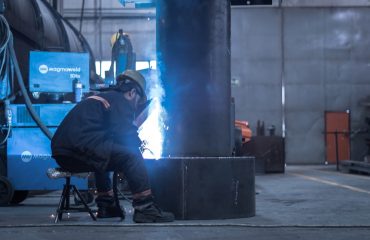body {
font-family: sans-serif;
line-height: 1.6;
}
h1, h2, h3 {
color: #333;
}
The steel industry, traditionally characterized by its heavy machinery and complex logistics, is undergoing a dramatic transformation thanks to digitalization. From the mine to the marketplace, digital technologies are streamlining processes, improving efficiency, and creating new opportunities for growth and innovation. This blog post explores the key aspects of this digital revolution and its impact on the future of steel commerce.
1. Optimizing Supply Chains with Digital Tools
The steel supply chain is notoriously complex, involving multiple stakeholders, geographically dispersed operations, and intricate logistics. Digitalization offers a powerful solution to optimize this intricate network. Solutions like blockchain technology enhance transparency and traceability, allowing for real-time tracking of materials from origin to final product. This reduces delays, minimizes errors, and improves overall efficiency. Furthermore, advanced analytics tools can predict demand fluctuations, optimize inventory management, and improve route planning for transportation, leading to significant cost savings and reduced waste.
Implementing Enterprise Resource Planning (ERP) systems integrates various aspects of the business, from procurement to sales, providing a holistic view of the supply chain. This integrated approach enables better decision-making, improved resource allocation, and enhanced collaboration among different departments and partners. Predictive maintenance using IoT sensors on machinery minimizes downtime and ensures consistent production output.
2. Enhancing Customer Relationships through Digital Platforms
Digitalization empowers steel companies to foster stronger relationships with their customers. Online portals and e-commerce platforms provide customers with convenient access to product information, pricing, and order tracking. This enhances transparency and builds trust, while also streamlining the ordering process. Personalized customer service through digital channels, such as chatbots and online support systems, improves responsiveness and customer satisfaction. Data analytics can be used to understand customer preferences and tailor product offerings accordingly, leading to increased sales and customer loyalty.
Furthermore, digital platforms facilitate direct interaction between steel producers and end-users, bypassing intermediaries and fostering more efficient market dynamics. This can lead to better price transparency and more competitive pricing for customers.
3. Leveraging Data Analytics for Smarter Decision-Making
The vast amounts of data generated throughout the steel supply chain represent a goldmine of valuable insights. Advanced analytics tools can process this data to identify trends, predict future demand, and optimize operations. For example, analyzing historical sales data can help predict future demand for specific steel grades, allowing companies to adjust production accordingly and minimize inventory costs. Similarly, analyzing sensor data from manufacturing equipment can help identify potential maintenance needs before they lead to costly downtime.
Predictive modeling can forecast market fluctuations, enabling companies to make proactive decisions regarding pricing, production, and investment. This data-driven approach improves decision-making across all aspects of the business, from procurement to sales and marketing.
4. Implementing Advanced Manufacturing Technologies
Digitalization is driving the adoption of advanced manufacturing technologies in the steel industry, such as additive manufacturing (3D printing) and robotics. Additive manufacturing allows for the creation of complex steel components with greater precision and efficiency than traditional methods. This opens up new possibilities for customized products and reduces material waste. Robotics automate repetitive tasks in the manufacturing process, improving productivity, reducing labor costs, and enhancing safety.
The integration of these technologies with digital platforms and data analytics creates a truly intelligent manufacturing environment, where production processes are optimized in real-time based on data-driven insights. This leads to higher quality products, improved efficiency, and reduced production costs.
5. Embracing Cybersecurity for Data Protection
The increasing reliance on digital technologies in the steel industry also brings increased cybersecurity risks. Protecting sensitive data, such as customer information and operational data, is crucial. Implementing robust cybersecurity measures, including firewalls, intrusion detection systems, and data encryption, is essential to prevent data breaches and maintain the integrity of the digital ecosystem. Regular security audits and employee training programs are also vital to mitigate cybersecurity risks.
The interconnected nature of the digital supply chain requires a collaborative approach to cybersecurity. Steel companies need to work with their partners and suppliers to establish common security standards and best practices. This collaborative approach ensures the resilience and security of the entire digital ecosystem.
In conclusion, digitalization is transforming the steel commerce industry, creating new opportunities for efficiency, innovation, and growth. By embracing digital technologies and implementing effective strategies, steel companies can enhance their competitiveness, improve customer relationships, and navigate the challenges of a rapidly evolving market. The future of steel commerce is undeniably digital, and those who embrace this transformation will be best positioned for success.
SEO Tags:
Digital Steel, Steel Industry Digitalization, Steel Supply Chain Optimization, Steel E-commerce, Steel Industry 4.0




